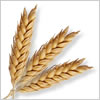Coșul tău

 USA: Farmers need to look at hull-less barley as a potential biofuel
USA: Farmers need to look at hull-less barley as a potential biofuel
Farmers need to work to incorporate sustainable and no-till field practices to reassure the public of agriculture’s environmental commitment, Lancaster Farmers reported June 22. In addition, farmers need to look to other potential grain crops — such as hull-less barley — to fill the renewable energy need.
Penn State has partnered with the University of Maryland and Virginia Tech over the past couple of years to evaluate how hull-less barley would work in crop systems.
Maryland and Virginia have strong barley production, but have been challenged to find a good market for it. The holdback for barley’s inclusion as a biofuel has been its hulls, which have been too hard on ethanol plant machinery.
The hull-less barley has a higher starch content and grinds better. The trade-off is a lower yield — about 80 percent — to the hulled varieties.
Seed handling is also important. If combined too quickly, the seed embryo could become damaged and impact germination for next year’s barley crop. To balance, recommendations are to increase seed planting rates.
Hopes are high that the new barley will invigorate its market. Maryland grain produces have announced plans for a barley ethanol plant, for a targeted operation date of 2009.
After working with the variety at the university, Roth said last year Penn State began to work with farmers willing to try it out on the farm. Homer Campbell of Berrysburg was one of the farmers who volunteered to work with the variety.
Campbell planted the hull-less barley for the first time last year, saving the seeds to plant this year’s crop, following no-till practices. The barley will be used as a supplemental feed for the farm’s beef steers this year.
As the cellulosic ethanol technology improves and corn stover is utilized, it opens the opportunity to double crop with barley and follow up with soybeans before returning to a corn rotation.
For farmers looking to plant hull-less barley, Roth said the variety, Doyce, developed by Virginia Tech has a limitation for most of the state’s winter weather. Its overwintering success is limited to the southern part of Pennsylvania. For the rest of the state, he recommends looking for a variety with tolerance for northern climate conditions.
The results of the 2006 farm trial, Roth said, show that the variety could be grown commercially. While the hull-less barley is “not ready for the prime time yet,” the potential is there, he said.
Înapoi





